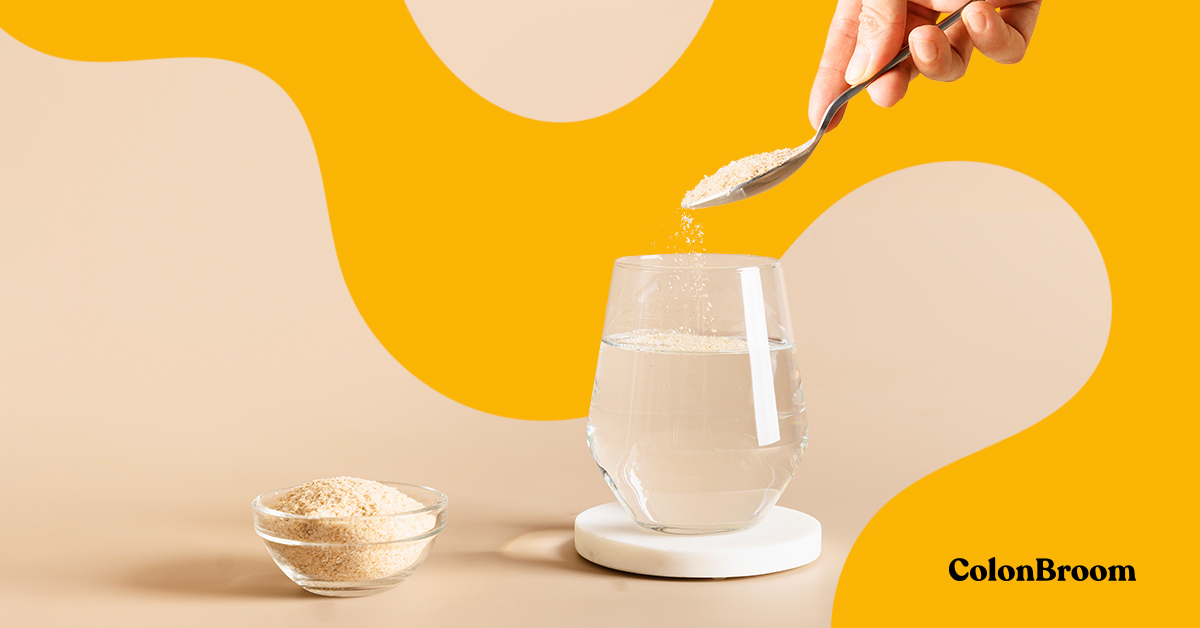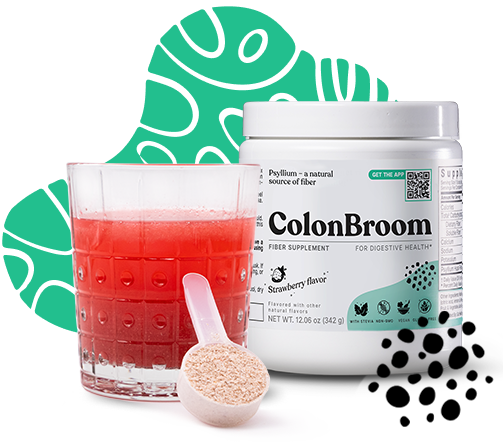In today’s fast-paced world, maintaining a balanced and healthy diet is essential for overall well-being. One often overlooked, yet incredibly important, aspect of nutrition is dietary fiber.
This comprehensive guide will answer the question of how much fiber you really need and shed light on the significance of dietary fiber in your daily diet. We will explore the recommended daily fiber intake, high-fiber foods to incorporate into your meals, and the crucial differences between the two types of fiber.

Contents
How Much Fiber Per Day Do You Really Need?
The daily intake of fiber varies from person to person, depending on several factors, including age, gender, and individual dietary needs. To fully unlock the benefits of dietary fiber, it’s crucial to understand how much is right for you.
For most adults, the recommended daily dietary fiber intake falls within the range of 25 to 38 grams. However, it’s worth noting that specific dietary needs may vary. Men typically require more than women, and dietary recommendations may differ for seniors.
This comprehensive guide will delve into the specifics, ensuring that you have a clear understanding of your daily fiber needs. Meeting these requirements is essential for promoting digestive health, managing body weight, and reducing the risk of chronic disease.
High Fiber Foods to Include in Your Diet

When it comes to achieving your recommended daily fiber intake, it’s essential to incorporate various fibrous foods into your diet. These fiber-rich options not only contribute to digestive health but also offer a range of other health benefits.
| If you’re following a ketogenic (keto) diet and wondering how to incorporate fiber into your low-carb eating plan, we’ve got you covered. You can find a comprehensive list of high-fiber keto foods in our dedicated article here. |
Here’s a list of some of the best foods matching your fiber needs to consider adding to your meals:
Fruits and vegetables
Fruits, vegetables, and plant foods are fiber-rich foods that should be the cornerstone of your diet. Here are five standout options to consider:
- Fresh berries. Berries like strawberries, raspberries, and blackberries are not only delicious but also packed with fiber. Adding a handful of these to your breakfast or as a snack can significantly boost your daily intake.
- Brussels sprouts. These little green powerhouses are rich in fiber and can be roasted, steamed, or sautéed to enhance your meals. Incorporating green peas into your diet is another excellent option to include more fiber and maintain steady blood sugars.
- Broccoli. A versatile vegetable, broccoli is not only a source of fiber but also provides an array of vitamins and minerals. Add it to stir-fries or enjoy it steamed with a sprinkle of lemon juice to help manage cholesterol levels.
- Spinach. This leafy green is not just about iron; it’s also an excellent source of fiber. Incorporate it into salads, smoothies, or as a side dish. Spinach, along with other leafy greens, can help you maintain your diet and lower the risk of chronic diseases.
Nuts and seeds

Nuts and seeds are compact but pack a powerful punch when it comes to fiber and other essential nutrients. Here are some to consider:
- Almonds. Almonds are not only a source of healthy fats but also provide a good amount of fiber. Snack on them or sprinkle sliced almonds on your oatmeal or yogurt for added bulk.
- Chia seeds. Chia seeds are well-known for their ability to absorb liquid and create a gel-like substance. This makes them an excellent addition to smoothies, yogurt, or as a topping for your morning cereal. They can also help manage blood sugar levels.
- Flaxseeds. Ground flaxseeds can be added to baked goods, smoothies, or used as an egg substitute in recipes. They are an excellent source of dietary fiber and can contribute to a lower risk of heart disease.
- Pumpkin seeds. Pumpkin seeds, also known as pepitas, are not only delicious but also rich in fiber. They make a great snack or can be added to salads and dishes for a satisfying crunch. Incorporating pumpkin seeds into your diet can help you maintain cholesterol levels.
- Sunflower seeds. Sunflower seeds are another convenient and tasty way to increase your intake of fiber. Sprinkle them on salads or enjoy them as a standalone snack. Their dalso support a healthy digestive system.
Whole grains
Whole grains are a fundamental component of a healthy diet. Consider incorporating these options:
- Quinoa. Quinoa is a complete protein source and a good fiber-rich food. Use it as a base for salads, grain bowls, or as a side dish.
- Barley. Barley is a versatile whole grain that can be used in soups, stews, or as a side dish. It’s a good source of fiber and can help you achieve your recommended daily intake.
- Oats. Oats are a breakfast staple known for their high fiber content. Start your day with a bowl of oatmeal, or use oats in baking for added grams of fiber. Oat bran, in particular, can assist in preventing constipation.
- Brown rice. Swap out white rice for brown rice to increase the amount of fiber. It’s a healthier choice that complements a variety of dishes and helps manage blood sugars.
- Whole wheat pasta. If you love pasta, opt for whole wheat flour pasta to enjoy the benefits of fiber in your favorite Italian dishes. This switch from refined grains to whole grain options can aid in preventing constipation and maintaining a healthy weight.
Fiber Supplements
While whole foods should be your primary source of fiber, sometimes it can be challenging to meet your daily requirements through diet alone. In such cases, fiber supplements, such as Psyllium husk, can be a helpful addition to your routine.

These natural supplements can assist you in reaching your daily goals and supporting your digestive health. Remember to consult with a healthcare professional before adding supplements to your diet, especially if you have underlying health conditions.
Different types of fiber: Soluble vs. Insoluble

When delving into the world of dietary fiber, it’s essential to understand the distinctions between soluble and insoluble. These two types of fiber have unique characteristics and contribute to your overall health differently:
Soluble fiber
Soluble fiber dissolves in water and acts like a sponge within your digestive tract. It forms a gel-like substance, slowing digestion and nutrient absorption. It can regulate blood sugar levels and support heart health.
Insoluble fiber
Unlike soluble fiber, insoluble does not dissolve in water. It remains intact throughout the digestive process, providing bulk to your stool and promoting regular bowel movements. This fiber plays a crucial role in maintaining digestive health and preventing constipation.
The Health Benefits of a Fiber-Rich Diet

Consuming an adequate amount of fiber can have lots of health benefits. Here’s how it helps:
- Promotes digestive health. Fiber helps prevent and relieve constipation, promoting regular and comfortable bowel movements. It also contributes to stool consistency and maintains a healthy digestive system.
- Regulates blood sugar levels. A fiber-rich diet can help stabilize blood sugar levels, reducing the risk of diabetes and aiding in its management.
- Supports heart health. By lowering cholesterol levels and reducing the risk of heart disease, fiber contributes to a healthy cardiovascular system. It also supports blood flow and cardiovascular health.
- Maintains a healthy weight. Fibrous foods promote a sense of fullness, aiding in weight management and reducing the risk of obesity.

- Enhances gut health. Fiber nourishes beneficial gut bacteria, fostering a balanced gut microbiome and supporting overall digestive health.
- Reduces cancer risk. A diet rich in fiber, especially from sources like grains, vegetables, and legumes, may lower the risk of certain cancers, including colon cancer.
- Improves overall well-being. Fiber’s positive effects on digestion, metabolism, and overall health contribute to a sense of well-being and vitality.
Potential Side Effects: Can You Have Too Much Fiber?

Some individuals may experience side effects when introducing too much fiber into their diet. These side effects can include bloating and gas, which can be uncomfortable but are often temporary as your body adjusts to higher fiber levels. Additionally, you may encounter constipation or even diarrhea if your body isn’t accustomed to such a diet.
To minimize potential side effects and safely introduce fiber into your diet, consider the following tips:
- Start slowly. Begin by incorporating small amounts of fiber-rich foods into your diet, such as fruits, vegetables, and grains. This gradual approach allows your body to adjust more comfortably.
- Gradually increase. Over time, gradually increase your intake, giving your digestive tract the opportunity to adapt without causing discomfort.
- Stay hydrated. Ensure that you drink plenty of fluids, as fiber absorbs water in the digestive tract. Staying well-hydrated can help prevent constipation and ease transitioning to a higher-fiber diet.
- Consult your doctor. If you encounter persistent or severe side effects or have any concerns about your intake, it’s advisable to consult with a healthcare professional.
How to Relieve the Symptoms of Too Much Fiber

Experiencing discomfort due to too much fiber, such as bloating or constipation, can be bothersome. Here are some effective tips to help you find relief:
- Stay hydrated. Adequate hydration is key. Drinking plenty of water can help soften stool and ease the passage through your digestive tract, reducing the risk of constipation.
- Mind your fiber sources. While fibrous foods are essential, if you’re experiencing discomfort, it’s advisable not to eat high-fiber foods for a little while. This can help minimize digestive distress.
- Stay active. Physical activity, such as taking a brisk walk, can stimulate your digestion and help alleviate symptoms like bloating and constipation.

- Gas-producing foods. Avoiding foods that tend to produce gas, such as beans and cruciferous vegetables, can reduce abdominal discomfort associated with excessive fiber intake.
- Opt for smaller, more frequent meals. Eating smaller, more frequent meals throughout the day can ease the digestive process, reducing the likelihood of bloating and discomfort.
- Consider a stool softener. If constipation persists, you might consider using a stool softener, but always consult with a healthcare professional before trying any medication.
- Seek medical advice. If your symptoms are severe, persistent, or do not improve with these measures, it’s essential to consult a doctor. They can provide a comprehensive evaluation and offer guidance tailored to your specific situation.
Unlocking the Power of Dietary Fiber: Key Takeaways

In conclusion, understanding how much fiber you need daily and incorporating such foods into your diet can significantly benefit your overall health. It’s essential to distinguish between soluble and insoluble fibers and recognize the various health advantages of a fiber-rich diet.
However, be mindful of excessive fiber intake, which can lead to certain side effects. Make informed choices about your daily intake, tailored to your specific needs, and share this knowledge with others to promote a healthier lifestyle. If you seek more information or guidance, don’t hesitate to explore additional resources and consult with healthcare professionals.
Take the first step toward a healthier you by incorporating the right amount of fiber into your daily diet with ColonBroom, and share this valuable information with your friends and family!
Related articles

How to Debloat Fast: Natural Remedies, Tips & Tricks
Are you tired of feeling bloated and uncomfortable? Whether it's an important event, a beach day, or simply the desire to regain a light and refreshed feeling, knowing how to debloat fast can be a game-changer. Bloating is a common issue, but you don't have to let it hold you back. In this article, we'll explore the science behind bloating, the primary causes, and, most importantly, practical steps to achieve instant relief.

How to Heal My Gut Naturally: The Comprehensive Guide
Achieving optimal gut health is paramount for overall well-being. In this comprehensive guide, we will explore the intricate relationship between digestive wellness and your body's overall health. Discover actionable strategies to heal your gut naturally, improve digestive function, and cultivate a thriving microbiome.

Unlocking a Healthier You: The Proven Science Behind ColonBroom Premium’s Success
This task becomes even more daunting considering the dietary habits prevalent in the USA. A significant number of Americans struggle to meet their daily fiber requirements, leading to issues like constipation, bloating, and difficulties in weight management. Amidst this backdrop, ColonBroom Premium emerges as a beacon of hope. This supplement is not just another addition […]
Take a quiz and get your personalised solution.





